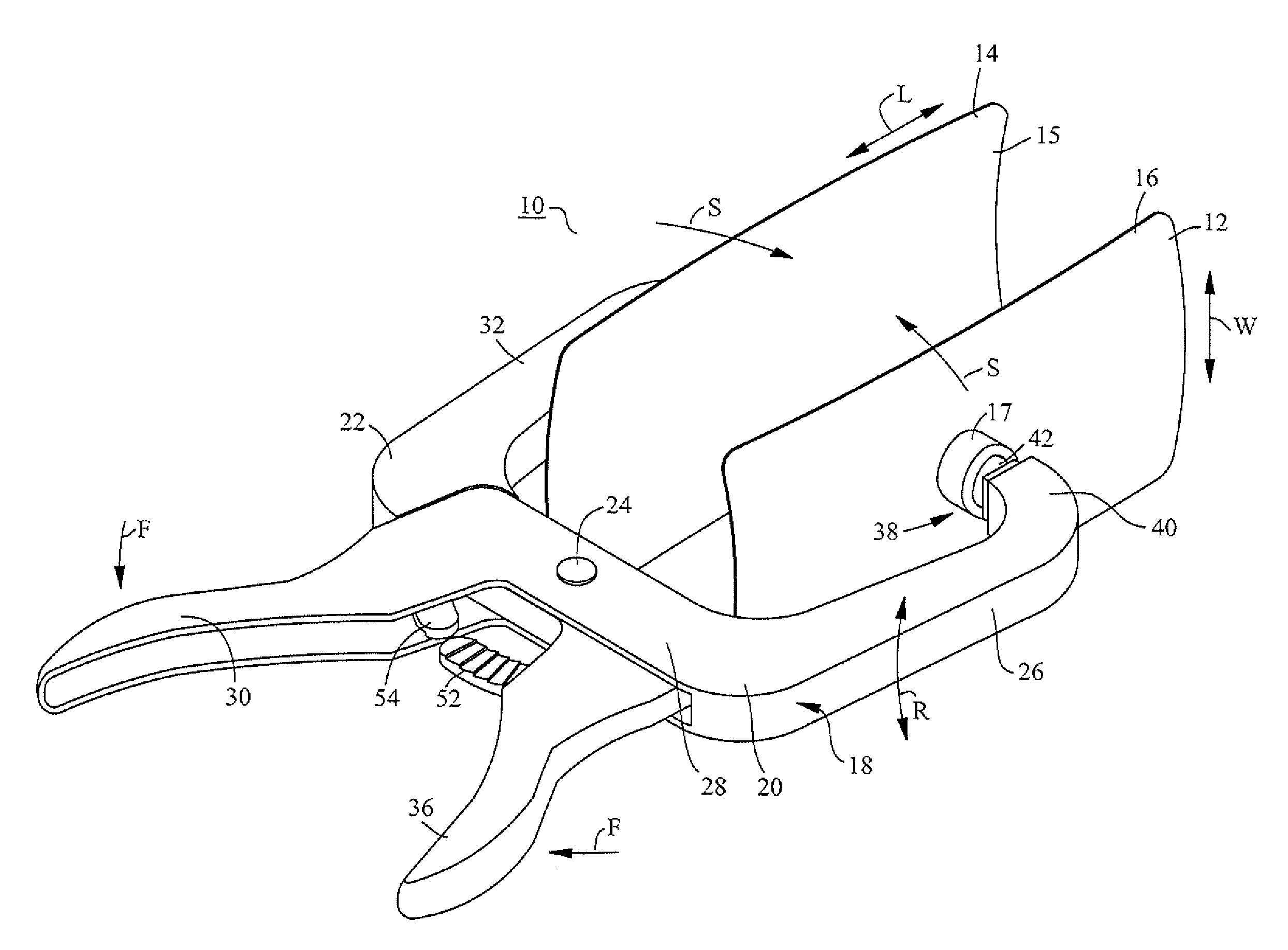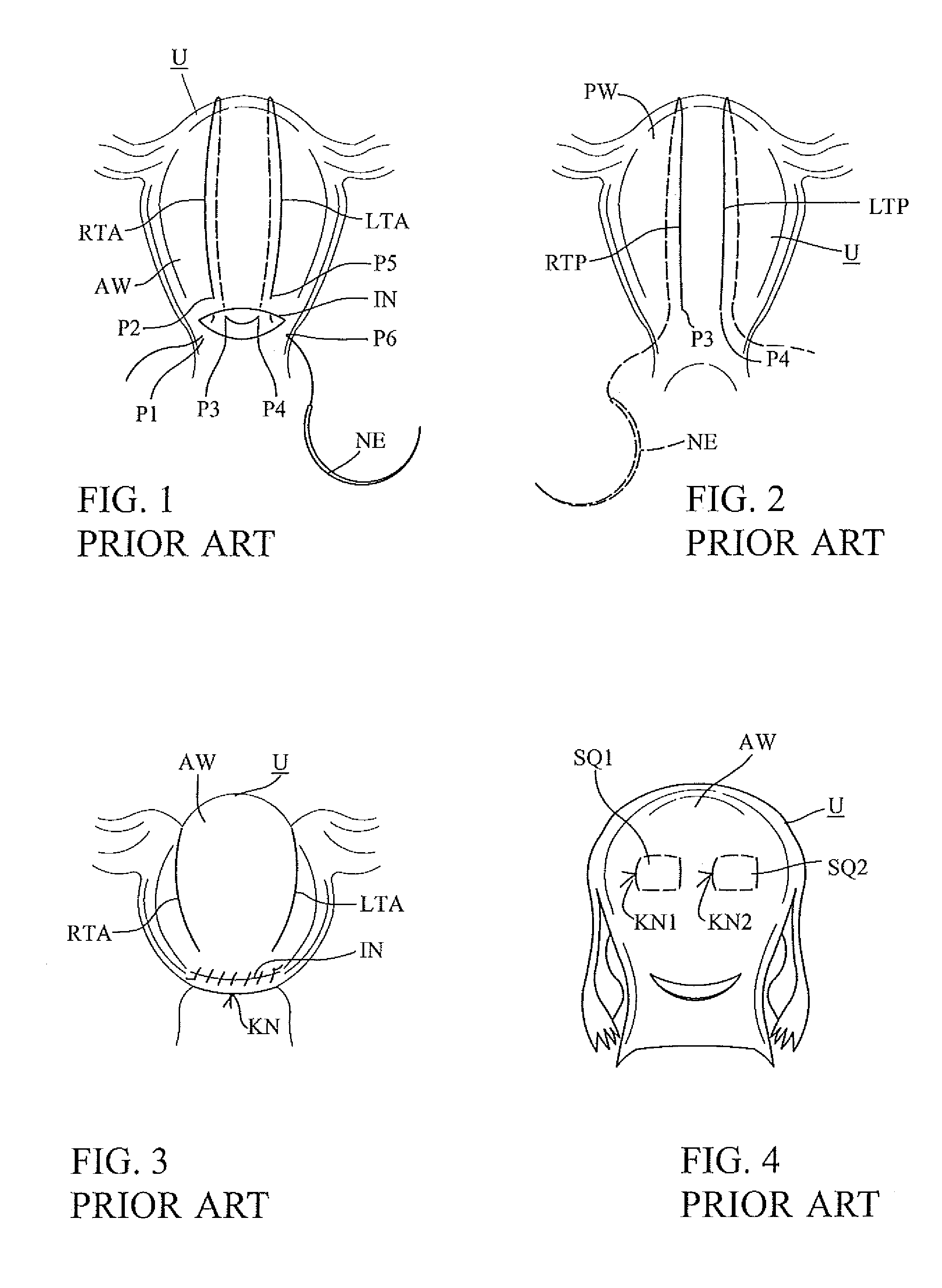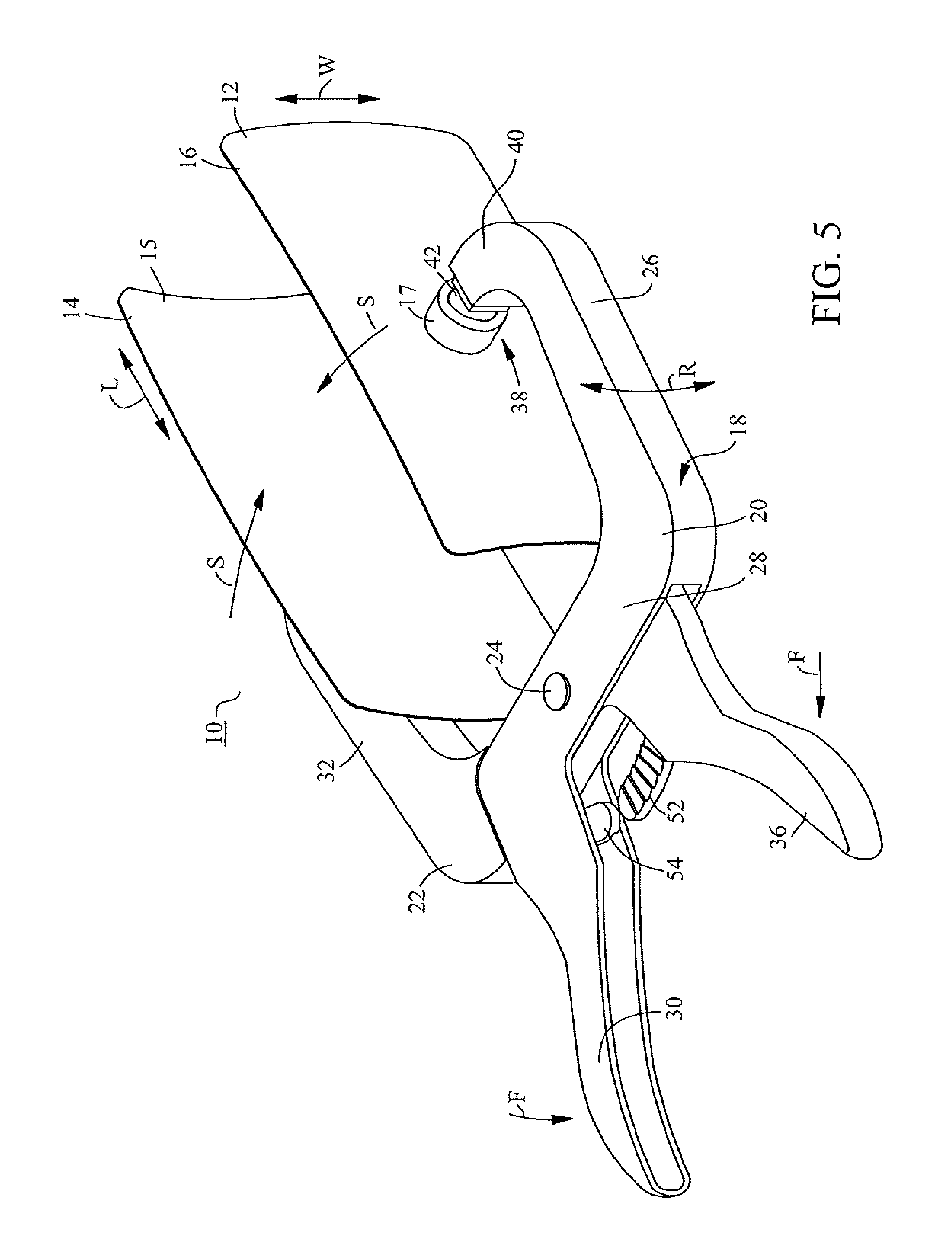Uterine clamp for treating postpartum hemorrhage and facilitating uterine repairs
- Summary
- Abstract
- Description
- Claims
- Application Information
AI Technical Summary
Benefits of technology
Problems solved by technology
Method used
Image
Examples
second embodiment
II. SECOND EMBODIMENT HAVING ENHANCED CLAMPING CAPABILITIES
[0046]A clamp in accordance with the present invention can also include additional features for enhancing its capabilities for facilitating routine postpartum uterine repairs and for other known PPH treatment interventions, such as a B-Lynch procedure, that require access to the posterior uterine wall to implement. FIGS. 6 and 7 illustrate an alternate embodiment of a clamp particularly adapted for that purpose. FIGS. 6 and 7 use the same reference numerals as the previous embodiments for similar features, except that they have a “1” preceding them. In other words, a clamp 110 in FIGS. 6 and 7 represents a second embodiment of the clamp 10 depicted and described above, with the same features, except where explicitly stated otherwise or as will be apparent as the description proceeds. As used herein, “B-Lynch procedure” means the procedure described in connection with FIGS. 1 to 3 above or variations thereof described in the ...
third embodiment
III. THIRD EMBODIMENT PERMITTING USE OF SQUARE SUTURING TECHNIQUES
[0049]A uterine clamp according to the principles described herein can be used in conjunction with other known PPH interventions to mitigate the emergency conditions under which such interventions heretofore have taken place. The embodiment of FIG. 6, discussed above, makes it possible to perform the more permanent B-Lynch procedure under more controlled conditions rather than as part of an emergency response. That is, while a clamp as described and claimed herein may in itself promote permanent hemostasis, it has the added advantage of permitting the employment of more permanent interventions while remaining in place. For example, a clamp in accordance with the present invention can also be adapted to permit the use of procedures in which the major uterine walls are sutured together, such as the square suturing techniques described above in conjunction with FIG. 4. FIGS. 8 and 9 illustrate a third embodiment of a cla...
PUM
 Login to View More
Login to View More Abstract
Description
Claims
Application Information
 Login to View More
Login to View More - R&D
- Intellectual Property
- Life Sciences
- Materials
- Tech Scout
- Unparalleled Data Quality
- Higher Quality Content
- 60% Fewer Hallucinations
Browse by: Latest US Patents, China's latest patents, Technical Efficacy Thesaurus, Application Domain, Technology Topic, Popular Technical Reports.
© 2025 PatSnap. All rights reserved.Legal|Privacy policy|Modern Slavery Act Transparency Statement|Sitemap|About US| Contact US: help@patsnap.com



